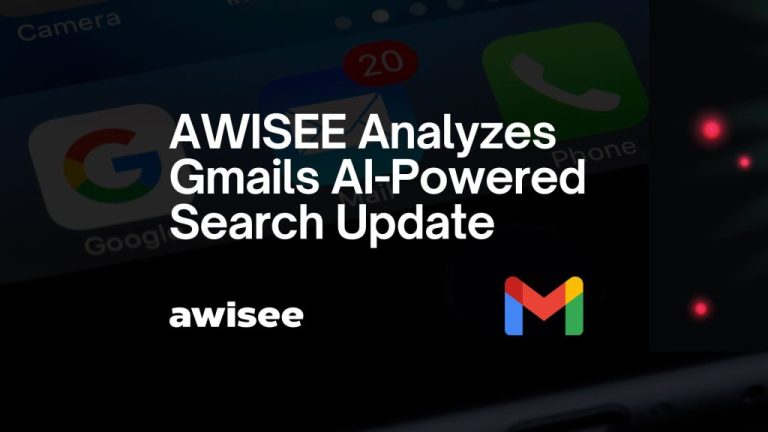Exploring the Data-Driven Future of Travel and Hospitality: What Lies Ahead
Is the Future of Travel and Hospitality Data-Driven?
The pressure is mounting on European travel and hospitality brands to adapt to the changing expectations of their customers. In a time when industry leaders like Netflix and Amazon have raised the standard for personalized recommendations and experiences, traveler satisfaction increasingly relies on a brand’s ability to deliver a tailored experience—from the initial trip research to post-journey reviews.
Despite recognizing the significance of effective personalization, many European travel and hospitality brands still struggle to implement strong, data-driven strategies.
Lost in the Check-In Shuffle: Organizing Travel Data Chaos
Fortunately, travel and hospitality brands now have access to more customer data than ever before. With a majority of travelers willing to share personal information in exchange for personalized services, now is an opportune moment for brands to enhance their first-party data collections. This is crucial as they navigate an increasingly complicated landscape of privacy regulations and the decline of third-party cookies.
Nonetheless, this also underscores the challenges related to data management. The issues surrounding customer data are not new; many brands have been attempting to consolidate data well before the pandemic. However, without common linking keys to connect disparate data points, organizations find it hard to gain a comprehensive view of their customers or to provide personalized services and experiences.
Challenges Faced by Travel and Hospitality Brands
- Messy Booking Data: The sheer volume of data collected by online travel agencies (OTAs), hotels, airlines, and car rental services poses significant challenges. Connecting and attributing ownership to this data can be exhausting, often leading to missed opportunities in delivering personalization and a deeper understanding of individual customer preferences.
- Fractured Identities: Customers tend to use various identifiers (such as emails, phone numbers, and usernames) across different channels and devices, resulting in fragmented identities. For instance, the system might fail to recognize that “Business Traveler Joe” and “Vacation Joe” are the same person with different loyalty accounts, which complicates the delivery of personalized experiences.
- Siloed Data: Achieving personalization should encompass a holistic approach throughout the entire customer journey—from online bookings to customer service interactions. However, many brands find it difficult to offer seamless personalization due to fragmented data and uncertainty about its accuracy. Bridging these gaps requires a deep understanding of the customer journey, alongside employee data and survey feedback.
- Legacy Tools: Data Management Platforms (DMPs) are becoming less effective. The decline is not just due to the technology itself but reflects a shifting landscape where DMPs function. Originally, DMPs helped marketers gain insights into unidentified audiences, a task they still perform adequately. However, increasing privacy concerns and evolving data regulations have made it harder to access clear audience insights, leading brands to seek alternative solutions like Customer Data Platforms (CDPs). CDPs utilize first-party data to establish a unified customer view, supporting data strategies more effectively in the current environment.
Data SOS: The Call for Data Intelligence
In today’s fast-paced digital age, where customer loyalty can be fleeting, travel and hospitality brands cannot afford to linger over legacy issues. They need to address these data challenges head-on to secure their future in a competitive landscape.
Fast, powerful, and adaptable Customer Data Platforms (CDPs) can significantly enhance the end-to-end data management process in three key areas:
- Rapid and effective identity resolution
- Real-time access to comprehensive customer profiles
- Data intelligence coupled with campaign orchestration
Identity resolution is a pivotal aspect of utilizing customer data. All other elements of personalized marketing and service hinge on having a clear, coherent record for each customer. The following three essential factors distinguish an intelligent identity solution:
- Comprehensive data collection: Effective identity platforms can ingest customer data in its raw, native format, regardless of its source. This capability eradicates the issue of data silos and negates the unnecessary need for reformatting. Thus, brands can maintain the richness of their data from the outset.
- Adaptable probabilistic identity resolution: Probabilistic identity resolution utilizes AI-driven algorithms to establish identity matches by intelligently linking seemingly unrelated datasets and identifiers. Unlike traditional deterministic methods that rely on exact matches, probabilistic platforms provide the flexibility to resolve identities on a much larger scale, allowing updates and adaptations as new data is introduced.
- Robust computing power: With petabytes of data streaming into identity systems daily, platforms must be built on a solid infrastructure. This enables brands to scale up or down according to their evolving business requirements.
Embracing personalization in travel and hospitality is crucial. By investing in strong data management systems, leveraging employee insights, and focusing on enhancing guest experiences, European travel and hospitality brands can make remarkable progress towards achieving true personalization. Harnessing the power of personalization enables brands to deliver unforgettable travel experiences, ultimately fostering success in an ever-evolving travel landscape.
Here are four data-driven strategies for travel and hospitality brands:
- React swiftly to intent signals: Travelers are making bookings more quickly after initiating trip plans. Targeted marketing should commence immediately upon detecting shopping indicators. Brands often struggle to understand customer intentions quickly due to organizing and integrating data issues.
- Expand beyond loyalty members: As travelers reassess their preferences post-pandemic, brands must work to regain loyalty. With many customers hesitant to commit to a single provider, it is essential for travel and hospitality brands to merge loyalty program data with other sources to gain a holistic understanding of each customer.
- Implement personalization at every customer interaction: While initial uses of customer data largely focused on marketing, there exists a substantial opportunity to leverage this information to tailor experiences throughout customers’ journeys. According to McKinsey, travelers increasingly require assistance, making it imperative to understand their needs proactively.
- Enhance first-party data collection: Growing privacy regulations make tapping into third-party data increasingly challenging. Despite this, many travel executives acknowledge that a significant portion of their customer data originates from intermediaries. Research shows that over 55% admit at least half of their data comes from third-party sources. Brands must shift their practices to enhance first-party data collection, remembering that customer data is a trust bestowed upon them.
Fostering unforgettable travel and hospitality experiences demands a commitment to data-driven strategies. By valuing guest experience data, brands can elevate how they engage with customers, not solely for profit but to enrich the entire guest experience. The journey toward surpassing today’s challenges begins with a dedication to remarkable moments that resonate deeply with travelers.
Recent developments in England have granted teachers the authorization to incorporate artificial intelligence (AI) into their classrooms. This move is expected to enhance educational experiences and improve learning outcomes for students. Educators are now exploring various AI-led tools and technologies to aid instruction and administrative tasks.
Additionally, the cryptocurrency industry is witnessing significant transformations influenced by AI technologies. Innovations are reshaping how digital currencies operate, providing enhanced security and efficiency. Stakeholders in the crypto space are keenly observing these changes as they unfold.
In other news, Sam Altman from OpenAI recently remarked on the dawn of the superintelligence era. This period signifies a leap forward in AI capabilities, prompting discussions about its implications for society and various industries. Experts are debating the potential risks and advantages of such advancements.
Furthermore, Mistral AI is positioning itself as a challenger to major tech companies with its new reasoning model. This initiative aims to bring advanced reasoning capabilities to the forefront of AI development, sparking interest across the tech community. The competition between emerging AI firms and established giants promises to lead to groundbreaking innovations.
Exploring Innovations in Artificial Intelligence and Machine Learning
Machine learning has become crucial in fortifying cloud-native container security. Its application in this domain enhances the overall security landscape, protecting sensitive data from threats. As developers leverage these technologies, they are better equipped to manage potential vulnerabilities within their cloud environments.
Additionally, machine learning is transforming business applications across various sectors, including finance and logistics. These innovative uses drive efficiency and accuracy, helping businesses make informed decisions based on data-driven insights. In the realm of face recognition and security, AI and bots have been under scrutiny for allegedly being used to artificially inflate music stream counts, raising ethical concerns about transparency in digital platforms.
Furthermore, partnering with outsourced developers presents distinct advantages. It offers companies access to specialized skills and resources without the overhead of maintaining an in-house team. This collaboration can lead to more robust software solutions, enabling businesses to focus on core operations while enhancing their technological capabilities.
Latest Developments
Recent advancements in AI include Magistral from Mistral AI, which poses a challenge to larger tech companies with its innovative reasoning model. There are also discussions surrounding the role of AI in blockchain technology, questioning its true potential and implications for the future.
On another front, Apple is making strides by opening its core AI model to developers, showcasing its strategy amidst the recent WWDC announcements. This move is expected to foster innovation and collaboration within the ecosystem.
As we navigate through these developments, the intersection of AI, machine learning, and development continues to shape industries and redefine our approach to technology.
Editor Initialization
The InitializeEditor function checks if the necessary scripts and themes are loaded, or if the current context is the form editor. If the form editor is detected, a warning message is logged to the console indicating that the gform.initializeOnLoaded() method is deprecated and will be removed in Gravity Forms version 3.1.
Script Loading
The initializeOnLoaded function sets up listeners for different script loading events. It ensures that the provided callback function is executed once all main scripts, theme scripts, and DOM elements are fully loaded. The function also utilizes the callIfLoaded method to determine the loading status.
Hook Management
The hooks object contains separate segments for actions and filters, allowing dynamic interaction within the Gravity Forms environment. The following functions manage these hooks:
addAction: Adds an action to the hooks.addFilter: Adds a filter to the hooks.doAction: Triggers an action and passes arguments to the related callback functions.applyFilters: Executes filter hooks and returns the modified result.removeAction: Removes specified actions from the hooks.removeFilter: Removes specified filters from the hooks.
Form Handling
Upon loading the form, the behavior is managed with AJAX calls. Key functionalities include initializing the form spinner and handling postback scenarios to ensure all content and confirmation messages are updated correctly. The code snippet incorporates checks for redirection and validation error displays.
Visibility Testing
A visibility test is performed through dynamically created span elements, ensuring all post-render events are triggered correctly without unnecessary repetitions. The implementation of a debounce function helps optimize performance by limiting the frequency of triggering post-render events.
Country Selection
Users are required to select their country from a comprehensive list that covers various regions, including specific functionalities to ensure a smooth selection process.
Permissions
By submitting your email, acknowledgment of terms and privacy policies is required. A validation field ensures that input remains compliant before processing.







